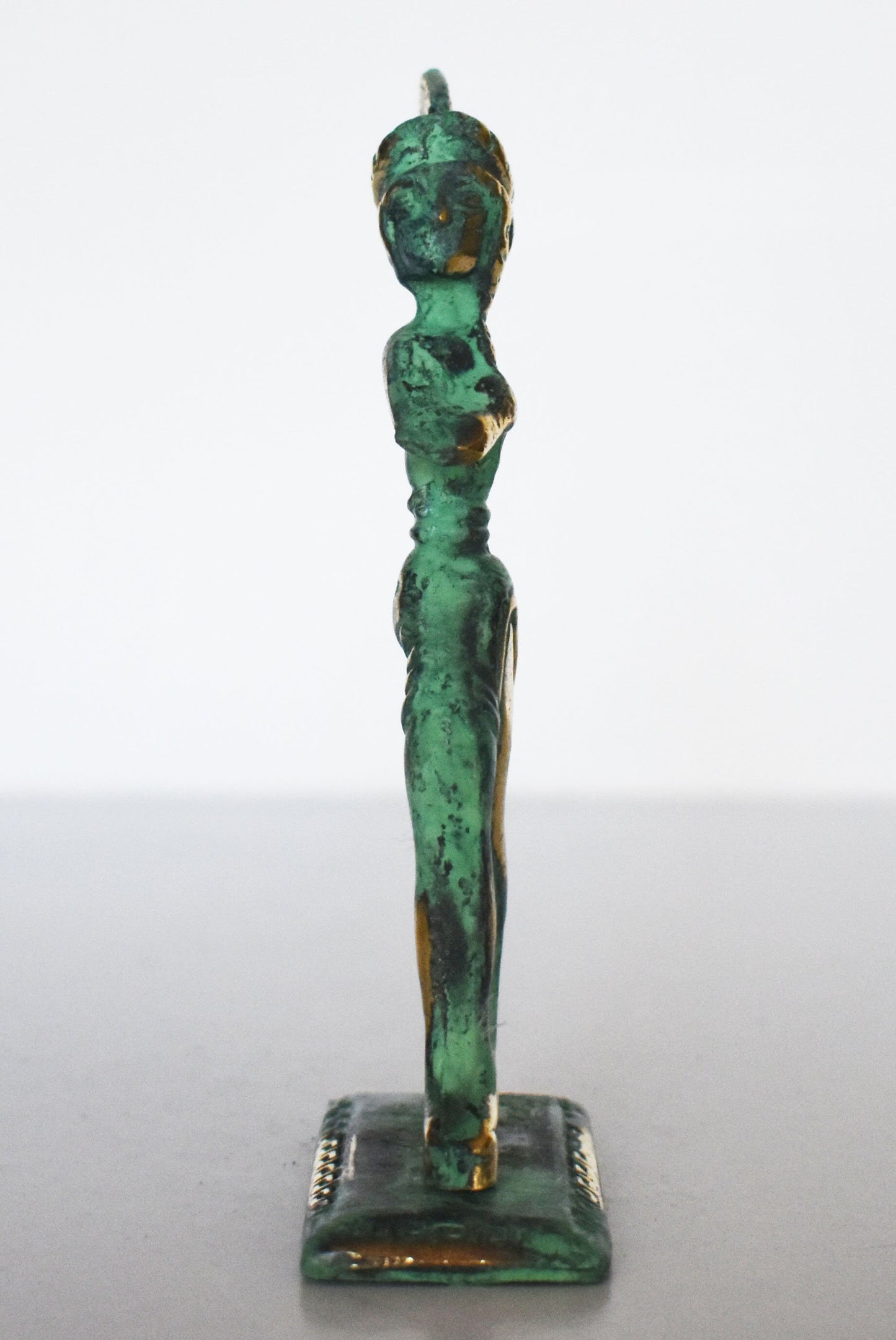Gallery Demeter
Prince of the Lilies - Bronze Age - Minoan Civilization - Knossos Palace - Crete - Greece - pure bronze statue
Prince of the Lilies - Bronze Age - Minoan Civilization - Knossos Palace - Crete - Greece - pure bronze statue
Couldn't load pickup availability
Condition: New, Made in Greece.
Material: Pure Bronze
Height: 12 cm - 4,7 inches
Width: 8 cm - 3,1 inches
Length: 3 cm - 1,2 inches
Weight: 190 g
The Prince of the Lilies, or the Lily Prince or Priest-King Fresco, is a celebrated Minoan painting excavated in pieces from the palace of Knossos, capital of the Bronze Age Minoan civilization on the Greek island of Crete. The original is now in the Heraklion Archaeological Museum ("AMH"), with a replica version at the palace which includes flowers in the background. Though often called a fresco, the figure (not including the flat background) is one of the smaller group of "relief frescos" or "painted stuccos", as the original parts of the image are built up in plaster before being painted. It is dated to "Late Minoan IA" by Sinclair Hood, circa 1550 BC, in the Neoplatial ("new palace") period between 1750 and 1500 BC). Maria Shaw says that estimated datings (in 2004) ranged between MM IIIB and LM IB "and occasionally later".
Only a few pieces of the original image were excavated; it was probably removed from its wall deliberately during rebuilding or renovating the palace. There have been a number of different suggestions from archaeologists as to the appearance of the original image, many very different from the grand male figure reconstructed a century ago. These go back to the original excavation under Sir Arthur Evans in 1901, as he first thought the fragments belonged to at least two figures, a possibility that remains under discussion. The uncertainty surrounding the fragments may be summarized by the title of a paper published in 2004: "The Priest-King Fresco from Knossos: Man, Woman, Priest, King, or Someone Else?", though in fact the paper tends to back more of Evans' conclusions that some subsequent scholars do.
Ι 480 ΠΡΙΓΚΗΠΑΣ ΠΡ - 6









